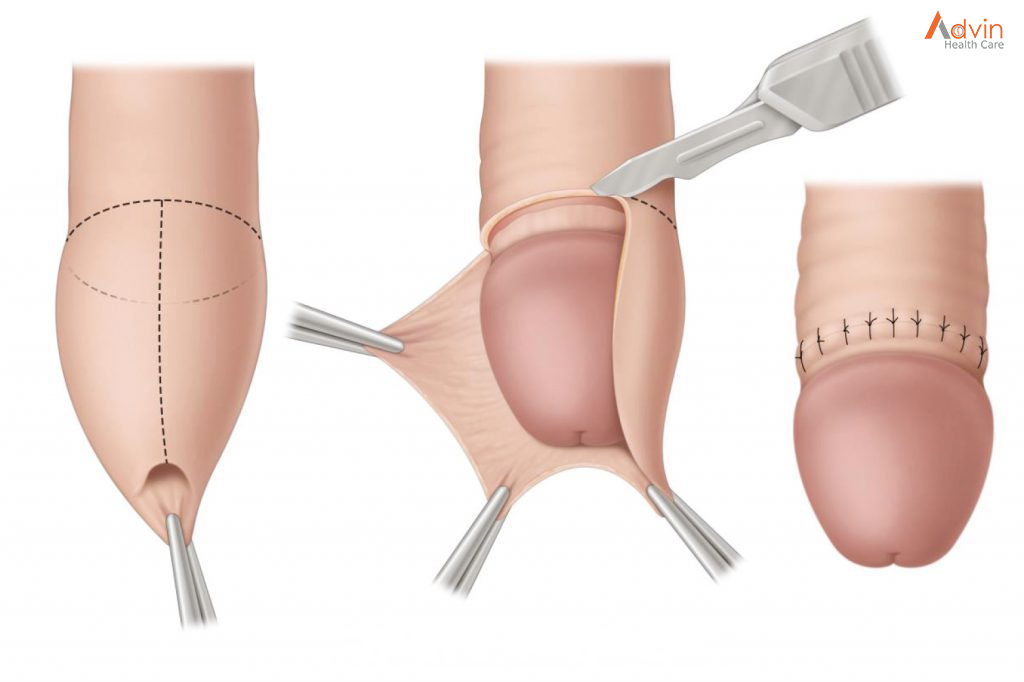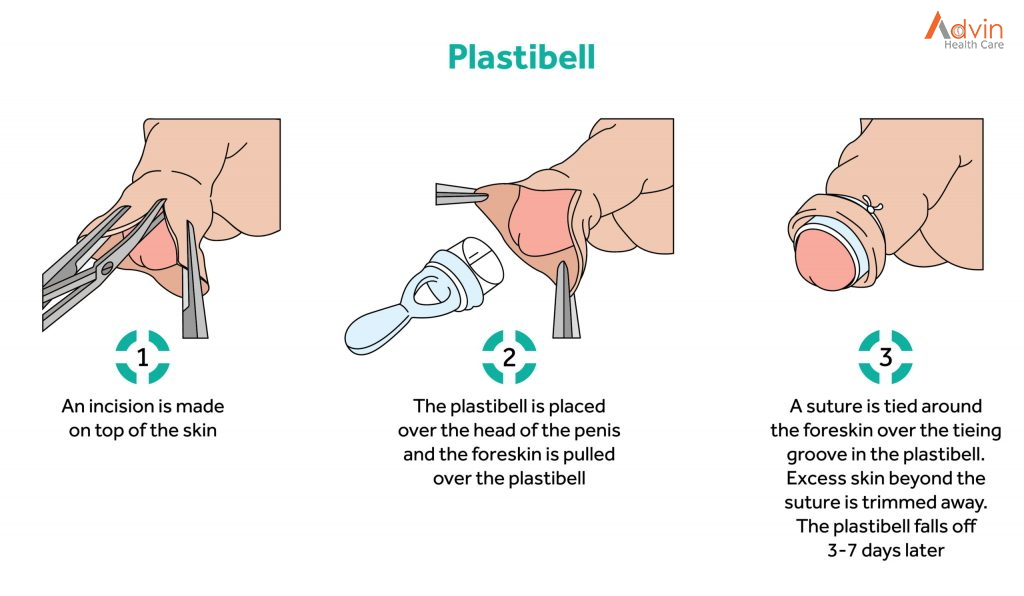Circumcision
Circumcision is the surgical removal of the skin covering the tip of the penis. The procedure is fairly common for newborn boys in certain parts of the world, including the United States. Circumcision after the newborn period is possible, but it’s a more complex procedure.
For some families, circumcision is a religious ritual. The procedure can also be a matter of family tradition, personal hygiene or preventive health care. For others, however, circumcision seems unnecessary or disfiguring.
Why it’s done

Circumcision is a religious or cultural ritual for many Jewish and Islamic families, as well as certain aboriginal tribes in Africa and Australia. Circumcision can also be a matter of family tradition, personal hygiene or preventive health care.
Sometimes there’s a medical need for circumcision, such as when the foreskin is too tight to be pulled back (retracted) over the glans. In other cases, particularly in parts of Africa, circumcision is recommended for older boys or men to reduce the risk of certain sexually transmitted infections.
Circumcision might have various health benefits, including:
- Easier hygiene.Circumcision makes it simpler to wash the penis. However, boys with uncircumcised penises can be taught to wash regularly beneath the foreskin.
- Decreased risk of urinary tract infections.The risk of urinary tract infections in males is low, but these infections are more common in uncircumcised males. Severe infections early in life can lead to kidney problems later.
- Decreased risk of sexually transmitted infections.Circumcised men might have a lower risk of certain sexually transmitted infections, including HIV. Still, safe sexual practices remain essential.
- Prevention of penile problems.Occasionally, the foreskin on an uncircumcised penis can be difficult or impossible to retract (phimosis). This can lead to inflammation of the foreskin or head of the penis.
- Decreased risk of penile cancer.Although cancer of the penis is rare, it’s less common in circumcised men. In addition, cervical cancer is less common in the female sexual partners of circumcised men.
The risks of not being circumcised, however, are not only rare, but avoidable with proper care of the penis.
Circumcision might not be an option if certain blood-clotting disorders are present. Also, circumcision might not be appropriate for premature babies who still require medical care in the hospital nursery or for babies born with abnormalities of the penis.
Circumcision doesn’t affect fertility, nor is circumcision generally thought to enhance or detract from sexual pleasure for men or their partners.
How you prepare
Before circumcision, the doctor will explain the risks and benefits of the procedure. Whether you’re planning to have your son circumcised or you’re pursuing circumcision for yourself, you’ll likely need to provide written consent for the procedure.
What you can expect

During the procedure
New-born circumcision is often done in the hospital nursery, usually within 10 days after birth.
For new-born circumcision, your son will lie on his back with his arms and legs restrained. After the penis and surrounding area are cleansed, an aesthetic will be injected into the base of the penis or applied to the penis as a cream. A special clamp or plastic ring will be attached to the penis, and the foreskin will be removed.
Afterward, the penis will be covered with an ointment, such as a topical antibiotic or petroleum jelly, and wrapped loosely with gauze. The procedure generally takes about 10 minutes.
Circumcision is similar for older boys and adults. However, the procedure might need to be done under general anaesthesia, recovery might take longer and the risk of complications might be greater when done later in life.
After the procedure
It usually takes seven to 10 days for the penis to heal. The tip of the penis is likely to be sore at first, and the penis might look red, swollen or bruised. You might notice a small amount of yellow fluid on the tip of the penis as well.
If your new-born is fussy as the aesthetic wears off, hold him gently — being careful to avoid putting pressure on the penis.
It’s OK to wash the penis as it heals. For new-borns, change the bandage with each diaper change, and apply a dab of petroleum jelly to the tip of the penis to keep it from sticking to the diaper. Change your baby’s diaper often, and make sure the diaper is loosely fastened.
If there’s a plastic ring instead of a bandage, it will drop off on its own — usually within about a week. Once the penis heals, wash it with soap and water during normal bathing.
Problems after circumcision are uncommon. Contact the doctor if:
- Normal urination doesn’t resume within 12 hours of the circumcision
- There’s persistent bleeding
- There’s foul-smelling drainage from the tip of the penis
- The plastic ring remains in place two weeks after the circumcision
What are the benefits of circumcision?
Circumcision has several benefits. Not only does it help aspects of penis health, but it can improve hygiene. That’s because a circumcised penis is simpler to clean and wash, especially for children.
The specific health benefits of circumcision include a lower risk of:
- Certain penis conditions: · These penile disorders include balanoposthitis (inflammation of the glans and foreskin), paraphimosis and phimosis, when the foreskin gets stuck out of place.
- Cervical cancer for partners: Female sex partners of circumcised men are less likely to get cervical cancer.
- Penile cancer: Men who had circumcisions are less likely to get cancer of the penis.
- Sexually transmitted infections: Men who had circumcision have a lower risk of certain STIs, including HIV.
- Urinary tract infections: UTIs are more common in uncircumcised males.



